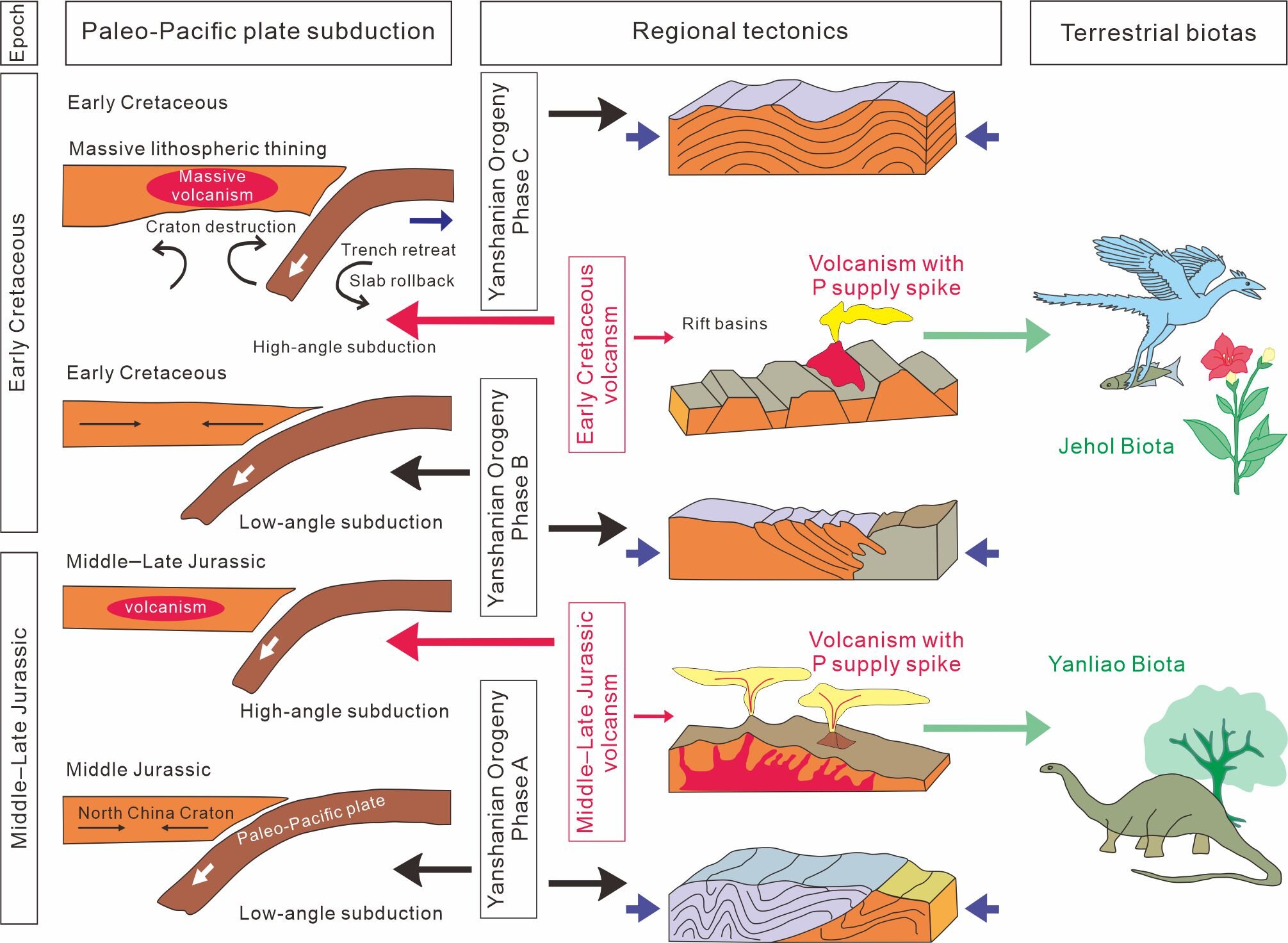Are you familiar with the Jehol Biota? It is an incredibly diverse collection of plants and animals that existed during the Mesozoic Era in northern China. This unique ecosystem, which included the earliest flowering plants, feathered dinosaurs, and early birds, boasted a remarkable level of biodiversity and biomass compared to other similar fossil-rich deposits.
But what made this area so abundant in life during that time? Recent research indicates that the flourishing of the Jehol Biota was closely linked to the destruction of the North China Craton. The intriguing story of how the craton’s demise led to the proliferation of the Jehol Biota has fascinated scientists for years. A study published in Science Bulletin, conducted by an international team of researchers, has uncovered a crucial factor that may have contributed to the abundance of the Jehol Biota during this tumultuous period: volcanic phosphorus (P).
During the Mesozoic Era, the destruction of the North China Craton resulted in massive volcanic eruptions, which spewed ash and lava across the landscape. Over time, as these volcanic materials weathered, they released significant amounts of phosphorus, an essential nutrient for life, into the soil and water. This rapid influx of phosphorus allowed plants to grow more rapidly and flourish, creating an ideal environment to support a thriving ecosystem of animals, ranging from insects to dinosaurs.
Professor Yanjie Tang from the Institute of Geology and Geophysics at the Chinese Academy of Sciences, the lead author of the study, stated, “Our research demonstrates that the abundance of terrestrial life in northern China during the Mesozoic Era was not merely coincidental but rather a response to the unique geological conditions of that time.”
By examining the volcanic-sedimentary sequences in northern China, researchers were able to track the changes in phosphorus availability, biological productivity, and species abundance over time. They discovered that there were intermittent increases in phosphorus supply, which coincided with periods of high biological productivity and species abundance.
Furthermore, the chronological pattern of Jehol fossils aligns with the migration of volcanic activity and the subsequent rise in phosphorus supply in northern China. These findings suggest that the heightened phosphorus supply from volcanic weathering played a significant role in the success of the Jehol Biota. However, the increased phosphorus supply was not continuous but rather occurred in intermittent pulses, corresponding to the dynamics of the Jehol Biota’s rapid diversification.
Interestingly, this pattern of a symbiotic relationship between volcanic activity and biota development was not exclusive to the Jehol Biota. Similar phenomena were observed in the preceding Yanliao Biota, which had a relatively lower fossil yield but still exhibited evidence of volcanic phosphorus supply. As the destruction of the North China Craton continued and volcanic activity persisted, the phosphorus supply increased, fostering an environment conducive to the remarkable prosperity of the Jehol Biota.
Scientists are still in the process of unraveling the precise mechanisms underlying this phenomenon. Nevertheless, it is clear that the Jehol and Yanliao biotas showcase the astounding intricacy of life on Earth and the multitude of factors that contribute to the evolution and development of different species.
These biotas serve as a reminder of the immense diversity and resilience of life, demonstrating its capacity to adapt and thrive even in the face of drastic environmental changes. By studying the connection between craton destruction and biota expansion, researchers are gaining valuable insights into the complex interplay between geology, climate, and biology that have shaped our planet over millions of years.
More information:
Chao Ma et al, Volcanic phosphorus supply boosted Mesozoic terrestrial biotas in northern China, Science Bulletin (2023). DOI: 10.1016/j.scib.2023.05.022
Citation:
How volcanic phosphorus supply boosted the Jehol Biota in northern China (2023, July 31)
retrieved 1 August 2023
from https://phys.org/news/2023-07-volcanic-phosphorus-boosted-jehol-biota.html
This document is subject to copyright. Apart from any fair dealing for the purpose of private study or research, no
part may be reproduced without the written permission. The content is provided for information purposes only.
Denial of responsibility! TechCodex is an automatic aggregator of the all world’s media. In each content, the hyperlink to the primary source is specified. All trademarks belong to their rightful owners, and all materials to their authors. For any complaint, please reach us at – [email protected]. We will take necessary action within 24 hours.

Jessica Irvine is a tech enthusiast specializing in gadgets. From smart home devices to cutting-edge electronics, Jessica explores the world of consumer tech, offering readers comprehensive reviews, hands-on experiences, and expert insights into the coolest and most innovative gadgets on the market.


